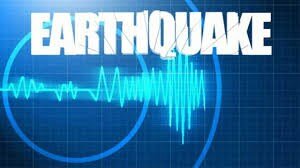Geonet: 95% chance of more quakes in the next 30 days

Geonet fears that there is a strong likelihood of more aftershocks after the Kaikoura earthquake on Monday 14th November.
"There is a 95 percent chance that another earthquake measuring between magnitude 6 and 6.9 will hit within the next 30 days," says Geonet.
To help understand the earthquakes and what to do about them, many people what to know what will happen next? While we can’t predict earthquakes we can provide some forecasts of future aftershocks and possible scenarios.
Probabilities have been calculated and scenarios have been developed and presented over the past few days.
With the current information, the most likely scenario is that aftershocks will continue to decrease in frequency over time.
Geonet describe this scenario below, along with two other scenarios that have much lower probabilities of occurring along with the main scenario.
Scenario One: Extremely likely (>99% within the next 30 days)
The most likely scenario is that aftershocks will continue to decrease in frequency (and in line with forecasts) over the next 30 days. Felt aftershocks (e.g. over M5) would occur from the M7.8 epicentre near Culverden, right up along the Kaikoura coastline to the Cape Palliser/Wellington area. This includes the potential for aftershocks of between 6.0 and 6.9 (93% within the next 30 days). Scenario one will continue to play out, even if either scenario two or three also occurs.
Scenario Two: Unlikely (approximately 25% within the next 30 days)
An earthquake smaller than Monday's mainshock and between M7.0 to M7.8 would occur. There are numerous mapped faults in the Marlborough or Cook Strait areas capable of such an earthquake. It may also occur on an unmapped fault. This earthquake may be onshore or offshore but close enough to cause severe shaking on land. This scenario includes the possibility of an earthquake in the Hikurangi Subduction Zone. Earthquakes here or in the Cook Strait have the potential to generate localised tsunami. The Hawke’s Bay earthquake sequence in 1931 provides an analogy to scenario two, as a M7.3 aftershock occurred approximately 2 weeks after the initial M7.8 earthquake.
Scenario Three: Extremely unlikely (<1% within the next 30 days)
A much less likely scenario than the previous two scenarios is that recent earthquake activity will trigger an earthquake larger than Monday's M7.8 mainshock. This includes the possibility for an earthquake of greater than M8.0, which could be on the 'plate interface' (where the Pacific Plate meets the Australian Plate). Although it is still very unlikely, the chances of this occurring have increased since before the M7.8 earthquake.
Geonet fears that there is a strong likelihood of more aftershocks after the Kaikoura earthquake on Monday 14th November.
"There is a 95 percent chance that another earthquake measuring between magnitude 6 and 6.9 will hit within the next 30 days," says Geonet.
To help understand the earthquakes...
Geonet fears that there is a strong likelihood of more aftershocks after the Kaikoura earthquake on Monday 14th November.
"There is a 95 percent chance that another earthquake measuring between magnitude 6 and 6.9 will hit within the next 30 days," says Geonet.
To help understand the earthquakes and what to do about them, many people what to know what will happen next? While we can’t predict earthquakes we can provide some forecasts of future aftershocks and possible scenarios.
Probabilities have been calculated and scenarios have been developed and presented over the past few days.
With the current information, the most likely scenario is that aftershocks will continue to decrease in frequency over time.
Geonet describe this scenario below, along with two other scenarios that have much lower probabilities of occurring along with the main scenario.
Scenario One: Extremely likely (>99% within the next 30 days)
The most likely scenario is that aftershocks will continue to decrease in frequency (and in line with forecasts) over the next 30 days. Felt aftershocks (e.g. over M5) would occur from the M7.8 epicentre near Culverden, right up along the Kaikoura coastline to the Cape Palliser/Wellington area. This includes the potential for aftershocks of between 6.0 and 6.9 (93% within the next 30 days). Scenario one will continue to play out, even if either scenario two or three also occurs.
Scenario Two: Unlikely (approximately 25% within the next 30 days)
An earthquake smaller than Monday's mainshock and between M7.0 to M7.8 would occur. There are numerous mapped faults in the Marlborough or Cook Strait areas capable of such an earthquake. It may also occur on an unmapped fault. This earthquake may be onshore or offshore but close enough to cause severe shaking on land. This scenario includes the possibility of an earthquake in the Hikurangi Subduction Zone. Earthquakes here or in the Cook Strait have the potential to generate localised tsunami. The Hawke’s Bay earthquake sequence in 1931 provides an analogy to scenario two, as a M7.3 aftershock occurred approximately 2 weeks after the initial M7.8 earthquake.
Scenario Three: Extremely unlikely (<1% within the next 30 days)
A much less likely scenario than the previous two scenarios is that recent earthquake activity will trigger an earthquake larger than Monday's M7.8 mainshock. This includes the possibility for an earthquake of greater than M8.0, which could be on the 'plate interface' (where the Pacific Plate meets the Australian Plate). Although it is still very unlikely, the chances of this occurring have increased since before the M7.8 earthquake.









Leave a Comment